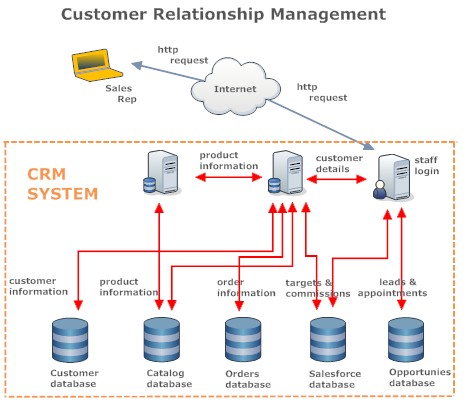 Section
Navigation
Section
Navigation
5. Gaining an Online Presence
Business to Customer
:Without a website
5.1 eMail Marketing
5.2 Merchant Services
5.3 Creating Mobile Applications
5.4 Newsletters
5.5 Selling on eBay
:Using Third Party Platforms
5.6 Marketing Platforms
5.7 Free Services
5.8 Social Media
:With a Website
5.9 Building a Website:
Introduction
5.10 Building a Website:
Technical
5.11 Mobile Web Pages
5.12 Professional Pages
5.13 Shopping Carts
5.14 Payment Systems
5.15 Site Hosting
5.16 Webzines
5.17 Auctions
5.18 Blogs
5.19 Content Management
Systems
5.20 Web Portals
5.21 Wikis
:With a Website:
Types
5.22 Selling Content
5.23 ePublishing
5.24 Distance Learning
5.25 Selling Advertising
5.26 Becoming an AdSense
Publisher
5.27 Becoming an Affiliate
5.28 Selling Physical Goods
5.29 Corporate eCommerce
5.30 eCommerce Servers
5.31 Staying Safe
:Business to Business
5.32 Customer Relationship
Management
5.33 Supply Chain Management
5.34 Digital Exchanges
5.35 eProcurement
5.36 Industrial Consortia
5.37 Private Industrial
Networks
 5.32
Customer Relationship Management
5.32
Customer Relationship Management
Customer Relationship Management programs manage a company's interactions
with customers, clients and sales prospects. At its most basic, CRM tracks
every stage in the sales process for every prospective client, but many
systems also handle opportunities, territories, sales forecasts, analytics,
workflow automation, quote generation, and product information. Some also
employ mobile phones, social media and/or cloud-computing, the last being
particularly attractive to smaller companies wanting to employ expensive
software on a 'pay per use' basis. CRM data can also help bridge the technology
divides that commonly develop in big companies (e.g. between R&D and Marketing).
Types
There are various incarnations, generally grouped by the aspects stressed.
Sales Force Management (SFM) or Sales Force Automation (SFA) concentrates on the sales process, enabling companies to use their sales representatives more effectively.
Marketing CRM systems focus on identifying and targeting potential clients to generate leads for the sales team. Media used include email, Internet search, social media, telephone and direct mail. Metrics include clicks, responses, leads, deals, and revenue.
Prospect Relationship Management (PRM) tracks customer behavior from first contact to sale, nurturing the relationship throughout.
Appointment CRM helps sales, customer support, and service personnel to arrange effective meetings with customers and prospects. Analytics are generally accessed by sales, marketing, and service, and often integrated with web statistics to compare on- and off-line marketing campaigns.

Advantages
When used properly, CRM systems provide:
1. Quick access to all critical account data, including a company overview,
key sales data, relevant documents, partners involved in the account,
and data sharing rules.
2. Integration of data from a wide variety of sources: email address
books, calendars, company data, personnel profiles, financial data,
industry contacts, etc.
3. Improved management of marketing campaigns, with the important metrics
displayed in customizable reports and visual presentations.
4. A more effective sales force, with data, quotes and examples immediately
to hand.
5. Better forecasts of product demand and sales revenues.
Problems
CRM systems have a mixed reputation. A 2003 Gartner report estimated that more than $1 billion had been spent on software that was left unused, and a 2007 TMCnet article cited employee resistance as still the biggest problem.
Many earlier models were:
1. Non-intuitive, making employees reluctant to climb the steep learning
curve.
2. Inflexible: companies had to fit their practices round the software.
3. Simply automated flawed customer management practices rather than
redesigned them according to best practice.
4. Over-complex.
5. Implemented in a fragmented way.
6. Liable to expose company shortcomings to their customers.
7. Lacking in an acceptable level of security
8. Binding the company to the system: if the software house failed,
then so could they.
Essential to successful implementation are:
1. Strategic planning with a thought-through rationale and clear targets.
2. Acceptance by all relevant departments.
3. Staff training and continued support.
 Questions
Questions
1. What is customer relationship management? Give examples of where
it could be useful.
2. Describe a typical crm system.
3. What are the pros and cons of customer relationship management?
4. Give a short history of customer relationship management implementation
in the USA.
 Sources and Further Reading
Sources and Further Reading
1. Top 5 On-Demand CRM Software Comparison Chart.
CRMCompare.
February 2011 Detailed comparison of 5 systems.
2. CRM Comparison 2010. 180
Systems. 13 system comparison in Excel format.
3. CRM Comparison Chart. CRMExposed.
8 detailed comparisons: dated 2009.
4. CRM Software Comparison Table. Concentrix.
2011. Compares 3 'best of breed' systems.
5. Customer relationship management. Wikipedia.
Detailed article with extensive references.
6. CRM Adoption 'Biggest Problem' in 83 Percent of Cases by David
Sims. November 2007. TMCnet.
Battles faced by management in implementing CRM systems.